To find out about the most suitable vision correction option, register for a visit, or find out other important information, leave your contacts, and we will contact you as soon as possible.
Eye and vision correction
The structure and function of the eye or how the eye works
Eye - a sensory (visual) organ that perceives light irritations, ensuring the reception of 90% of environmental information.
The transparent media of the eye - the cornea, the anterior chamber fluid, the lens, the vitreous - form an optical system that refracts the light rays that enter the eye and focuses them on the retina. Light rays are passing through optical media on the retina, creating an image.
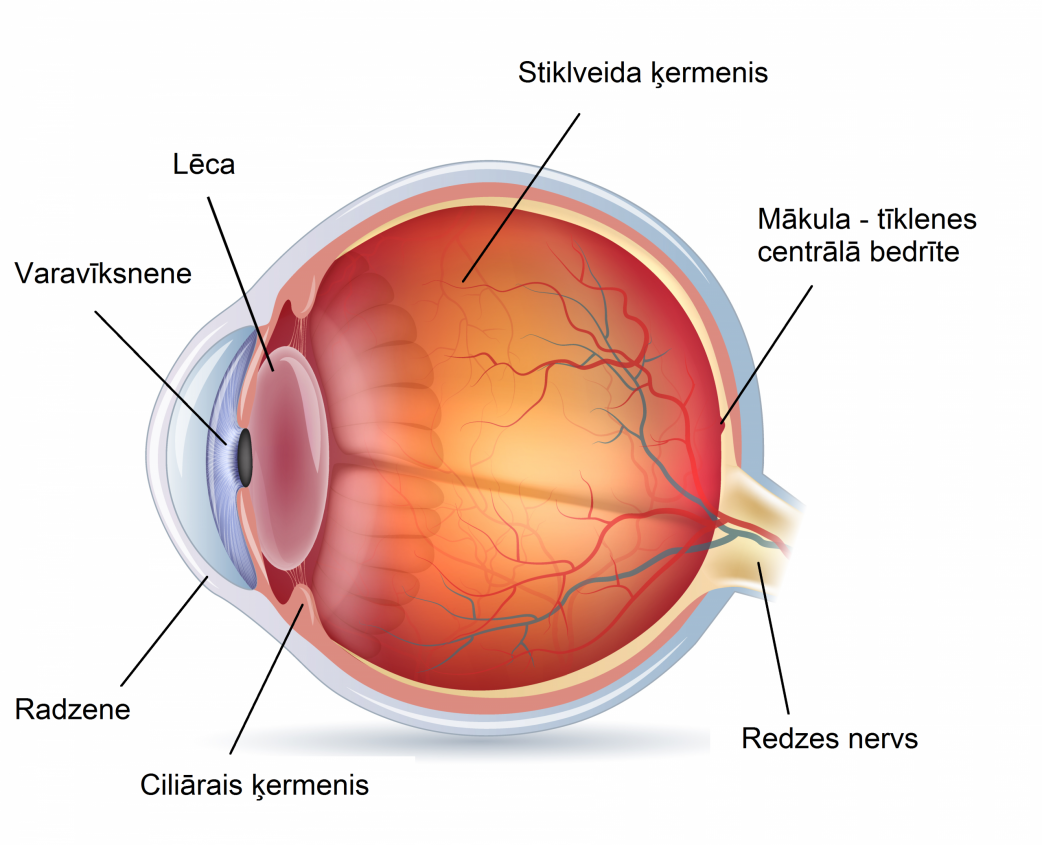
The eye lens provides a person's ability to see the surrounding objects clearly in cooperation with the inner or ciliary muscle of the eye. Yet, there are suspensory ligaments between the eye's lens and the ciliary muscle, structurally similar to inelastic threads. Their primary function is to hold the lens in place and change the shape of the eye's lens when the ciliary muscle is tense or relaxed.
The eye's ability to adjust its optical power to view objects at different distances is called accommodation.
- The accommodation mechanism is provided by the eye's natural lens, ciliary muscle, and suspensory ligaments.
- With the help of accommodation, it is possible to change the eye's lens's shape and optical power so that the images of all objects between the nearest and farthest point of clear view are formed on the retina. Therefore, when examining vision, it is crucial to evaluate the performance of the eye accommodation.
- The eye's adaptation to view objects at different distances is the ability of the lens of the eye to change its optical power.
- Eye accommodation is an essential function of the visual system, provided by a complex and delicate neuromuscular system mechanism. Consequently, various disturbances in this system may disrupt the accommodation mechanism and may lead to reduced vision.
- It is the ability of the eye to change its refractive power of the optical system so that images of all objects between the nearest clear point of view and the farthest point of clear view are formed on the retina.
Binocular vision characterizes the cooperation of both eyes, creating an image.
Stereoscopic vision allows for distinguishing of the position of the objects in the space and evaluating their spatiality.
Normal vision
Suppose the parallel rays of light entering the eye focus on the retina objects near and far are clearly visible.


Refractive errors
| Myopia or nearsightedness | Hypermetropia or long-sightedness | Astigmatism |
| If the eyeball's length is greater, the parallel rays of light entering the eye will focus in front of the retina. Distant objects look blurred compared to nearby objects. |
If the eyeball's length is small, the parallel rays of light entering the eye focus behind the retina. Nearby objects look blurry compared to distant objects. |
The cornea's uneven shape creates a situation in which the parallel rays of light entering the eye focus on several points. Vision at all distances may be blurred. |
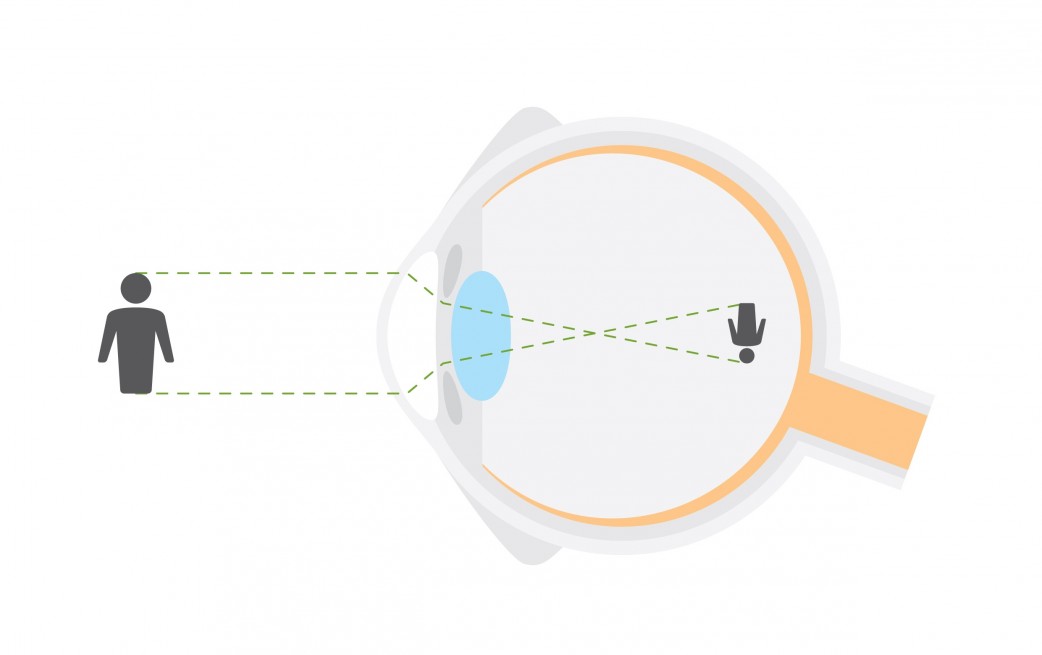 |
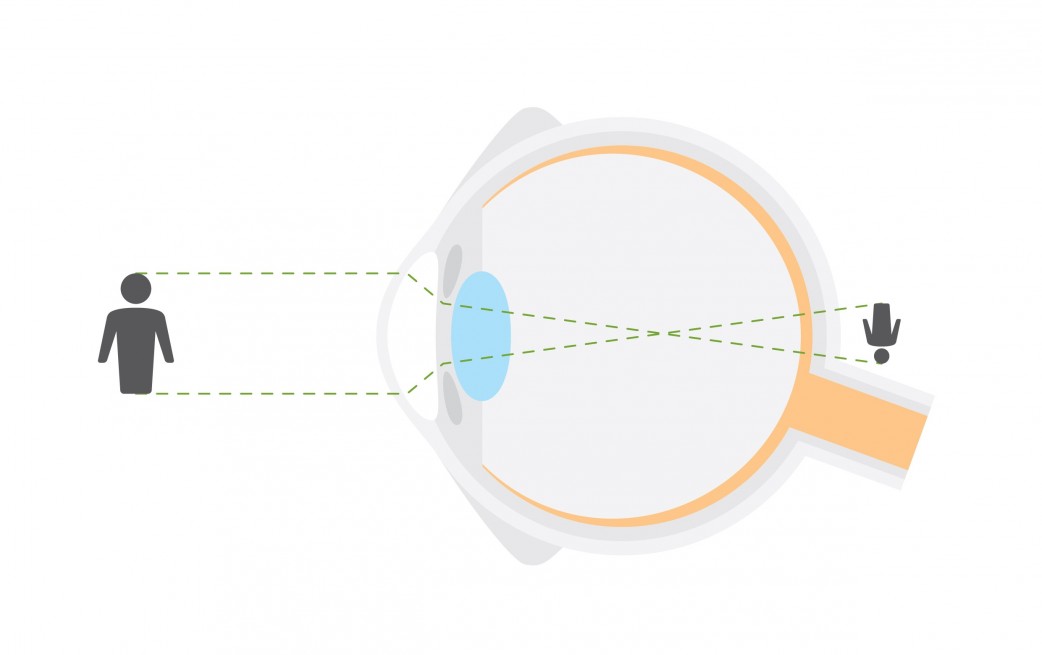 |
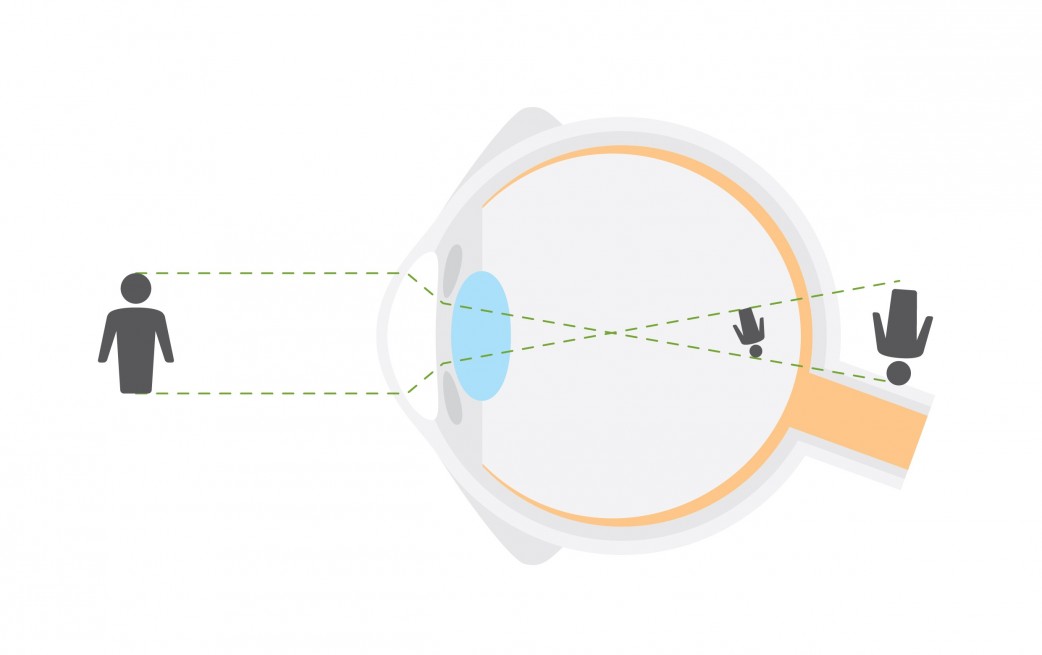 |
 |
 |
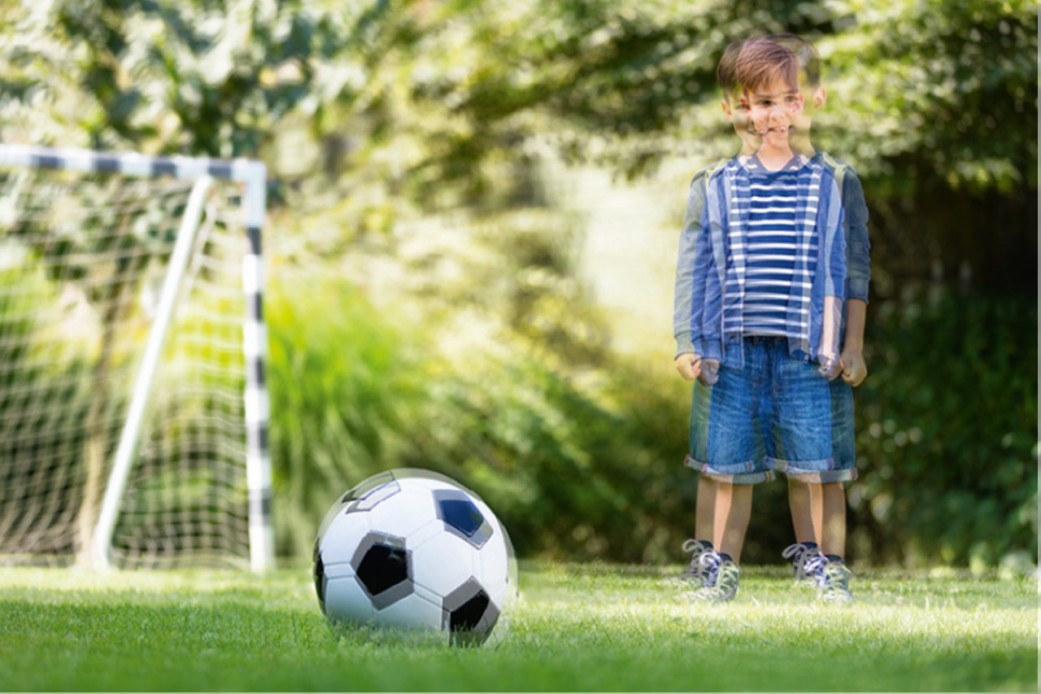 |
Presbyopia
As the body ages, the eye's ability to accommodate also changes - the lens of the eye becomes less flexible to adapt to clear vision in the vicinity and distance. It becomes increasingly difficult to focus the space between distant and closer objects. This decrease in the ability to accommodate the eyes is called age-related farsightedness or presbyopia.
Age-related farsightedness begins in people after the age of 40 and develops up to the age of 65.
The discomfort caused by the peculiarities of vision can be eliminated by vision correction.
Vision correction is possible for patients of any age, applying the method available for each age group and required by each personally.



